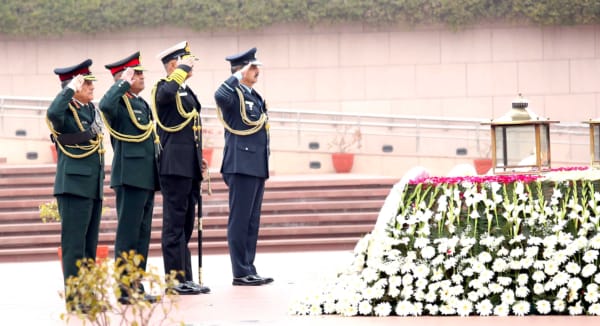NEW DELHI: Prime Minister Narendra Modi made an unexpected announcement of appointing a Chief of Defence Staff (CDS) as principal military adviser to the government from the ramparts of the Red Fort on August 15, 2019.
Four years after that rather sudden decision, three or four areas have seen substantial progress in reorganisation of India’s higher defence organisation. A Department of Military Affairs (DMA) has brought greater cohesion in decision-making in the Indian armed forces; CDS Gen. Anil Chauhan is now firmly in the saddle after the first incumbent Gen. Bipin Rawat’s death in a helicopter accident; the three services appear to have reached some kind of broad consensus on creation of three joint or theatre commands.
However, discussions on what model to adopt in creating a structure at the headquarters to exercise command and control over the proposed theatre commands and the shape that theatre commands must themselves adopt in executing military plans, are still on. Various models have been deliberated upon in the regular meetings that the CDS and the three service chiefs have been holding under the rubric of the Chiefs of Staff Committee (CoSC), of which Gen. Chauhan is the permanent chairman by virtue of his position.
Various models adopted in implementing theatre command structures in countries such as the United States, the UK, Australia and a couple of other countries are being thoroughly examined to see which elements can be replicated for Indian requirements.
According to multiple well-informed sources, the military leadership has agreed to create three adversary-specific theatre commands: a northern command to tackle the China challenge on the land borders stretching from Arunachal Pradesh in the east to Ladakh in the north-west; a Western Command to look after the Pakistan front and a Maritime Command to keep a watch on the Indian Ocean region in particular and the larger Indo-Pacific in general.
The devil as usual lies in detail. While it is easy to announce theatre commands, how they would function in coordination with the HQ IDS (Integrated Defence Staff) and various verticals under it, remains a tricky issue to tackle. Along with it is the question of the exact role that the CDS and the three Chiefs of Staff will play once the theatre commands start functioning.
One of the key points that was made in the notification issued by the government in appointing Gen. Rawat to the top post in December 2019 was that the CDS will not exercise any military command including over the service chiefs so as to provide impartial advice to the political leadership. If that be so, several questions then arise: who will have operational control over the theatre commanders? Should the government think of restructuring and expanding HQ IDS to fulfil that requirement?
The process will entail realigning some of the existing service headquarter verticals under/functions under HQ IDS without affecting the overall functional aspects of service HQ with the remaining elements.
If so, what would be the structure of such an organisation and how will the HQ staff in the theatre commands interact with the headquarter in Delhi?
Looking at the higher defence organisation structures in Australia and the UK, appointment of a No. 2 to the CDS (calling him Vice Chief of Defence Force or Vice Chief of Defence Staff as the case may be) seems imperative. Can this second-in-command to the CDS then exercise authority over theatre commands with the help of two deputies, one tackling pure operations and the other administrative and related matters?
If this model is to be adopted, the theatre commands must have parallel organisation to coordinate day-to-day functioning with the headquarter effectively. Again, this needs to be discussed threadbare before arriving at a satisfactory arrangement is the feeling among those who are entrusted to find a way forward.
(This is the first of a two-part exclusive series on theaterisation)
Related Links:
















